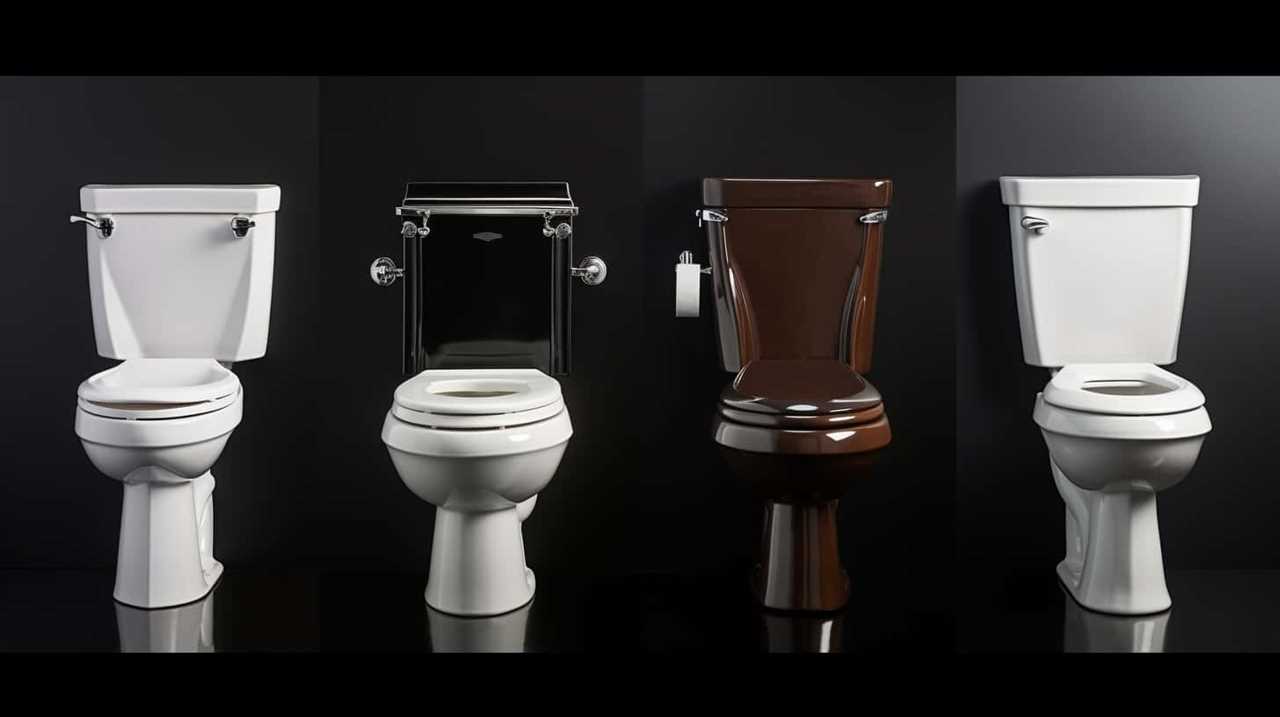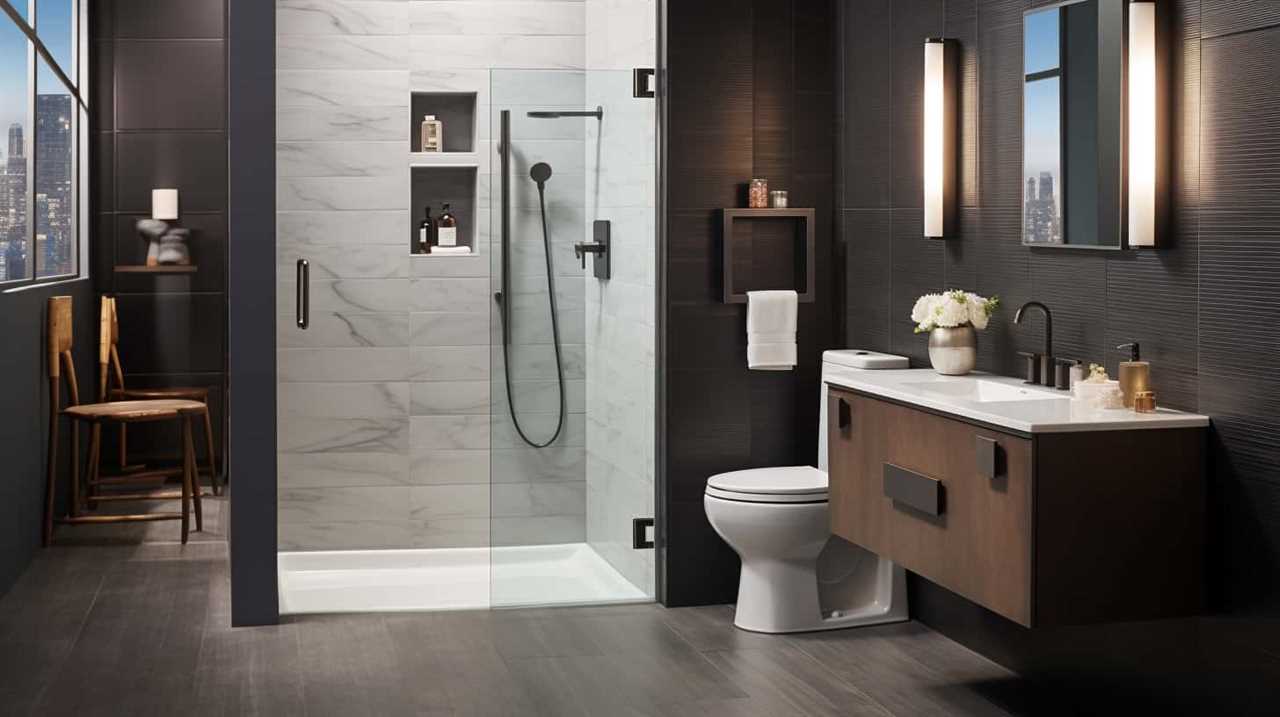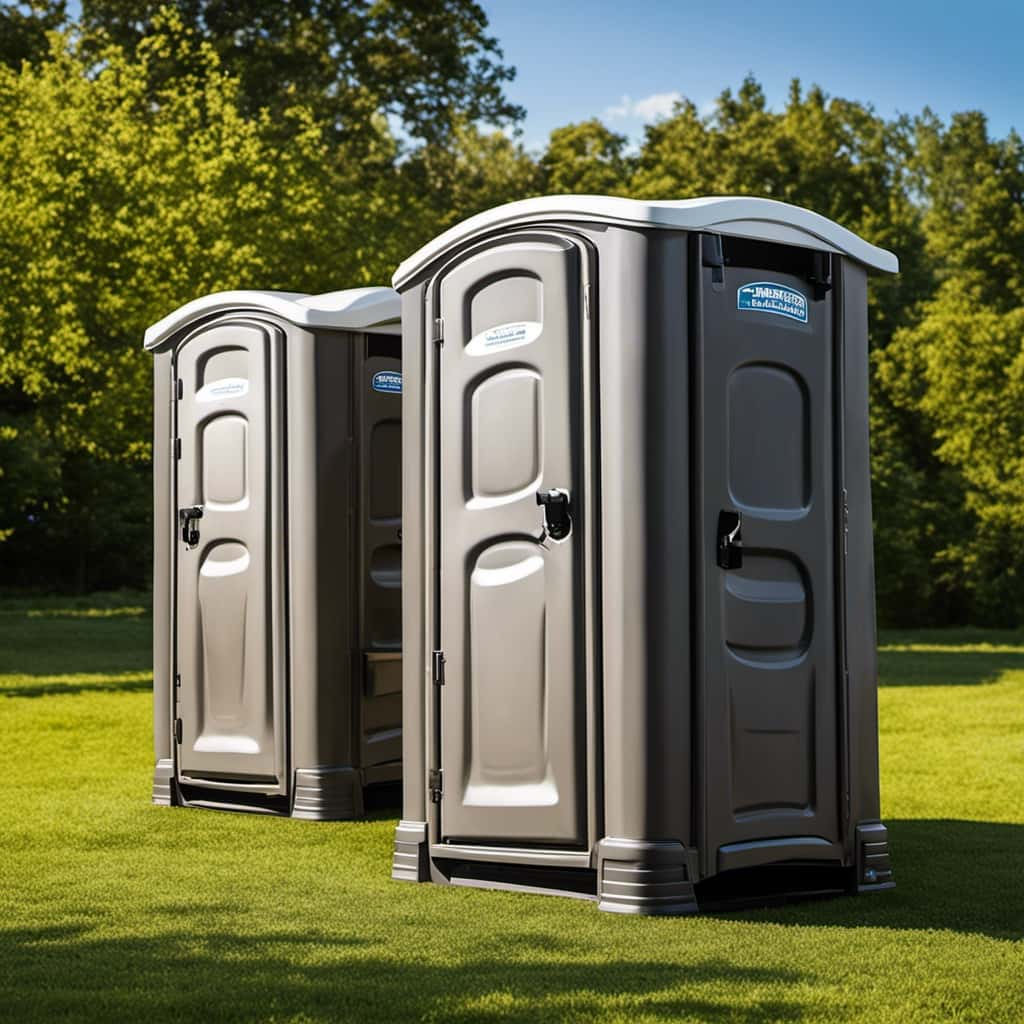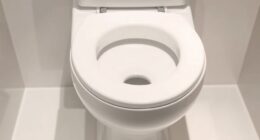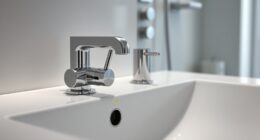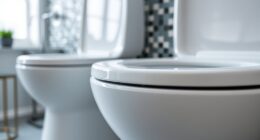Ever been annoyed by the incessant trickle of a toilet? We’ve all been there. But fear not, for we hold the key to stopping this bothersome phenomenon.
In this article, we’ll guide you through the steps to put an end to your toilet’s trickling troubles. From checking the flapper valve to inspecting the overflow tube, we’ll empower you with the knowledge and mastery to become the ultimate toilet troubleshooter.
So let’s dive in and bid farewell to that trickling sound once and for all!
Key Takeaways
- Worn-out or misaligned flapper valves can cause continuous trickling.
- Checking the fill valve and adjusting the float can help resolve trickling.
- Cleaning the fill valve ensures proper water flow and prevents blockages.
- Replacing the flush valve is essential to stop toilet trickling.
Check the Flapper Valve
To fix a trickling toilet, we need to inspect the flapper valve. The flapper valve is responsible for regulating the flow of water from the tank into the bowl. If it’s worn out or not seated properly, it can cause water to continuously trickle into the bowl, wasting water and potentially increasing your water bill.
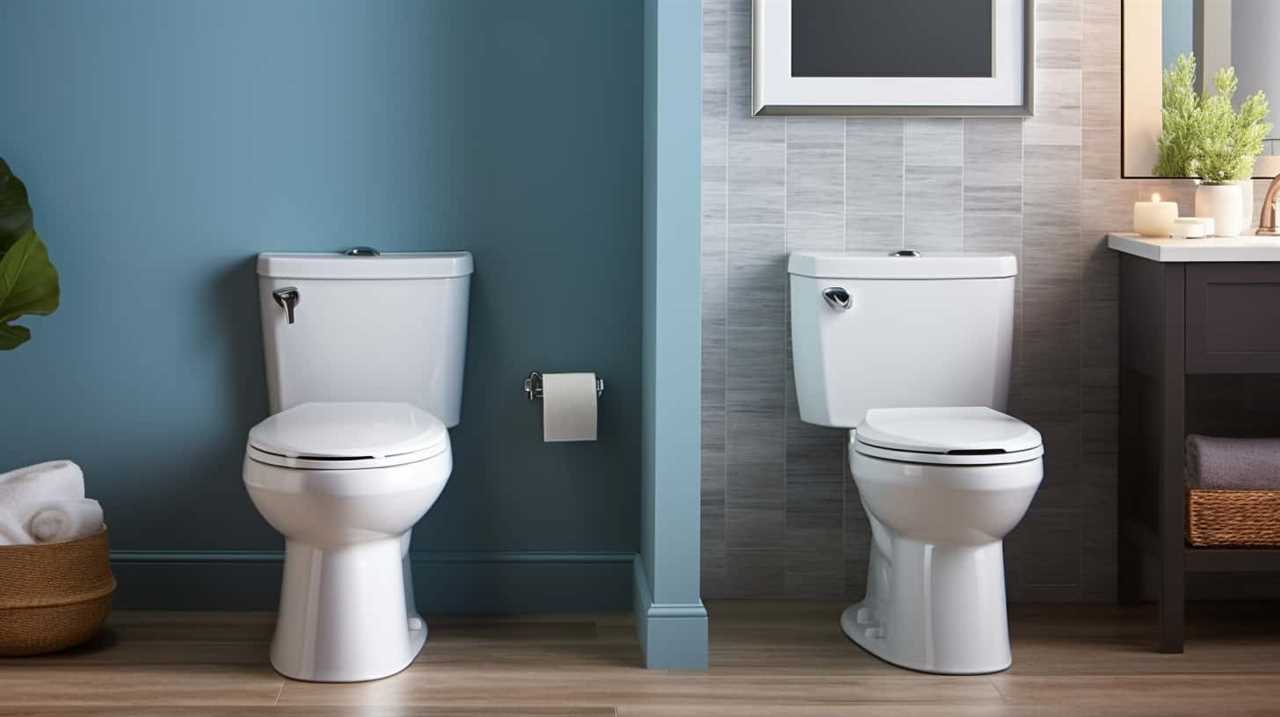
To troubleshoot this issue, start by removing the tank lid and flushing the toilet. Observe the flapper valve as it lifts and falls. If it doesn’t close completely, it may be time to replace the flapper valve.
Additionally, check the water pressure in your home. Low water pressure can also cause a trickling toilet. If you suspect low water pressure, it may be worth contacting a professional plumber to evaluate and resolve the issue.
Adjust the Water Level
By adjusting the water level, we can effectively stop the trickling in the toilet. It is important to ensure that the water level in the toilet tank is properly set to prevent any water from continuously flowing into the bowl. Here are some water level adjustment tips to help you resolve this issue:
| Water Level Adjustment Tips | Common Causes of Toilet Trickling |
|---|---|
| Check the fill valve | Faulty flapper valve |
| Adjust the float | Loose or worn-out flapper |
| Replace the fill valve | Incorrect chain length |
| Inspect the chain | Debris blocking the flapper valve |
| Verify water level | Damaged flush valve |
Clean the Fill Valve
Now, let’s address cleaning the fill valve as we continue troubleshooting the trickling issue in our toilet. Cleaning the fill valve can help ensure proper water flow and prevent any blockages that may be causing the trickling problem.

Here are some steps to follow:
- Turn off the water supply to the toilet by shutting off the valve located behind the toilet.
- Remove the tank lid and locate the fill valve. It’s usually on the left side of the tank.
- Use a cloth or sponge to clean the fill valve thoroughly, removing any debris or sediment that may have accumulated.
- Check the water supply line for any blockages or leaks. If necessary, replace the water supply line.
- If cleaning the fill valve doesn’t resolve the trickling issue, you may need to replace the float mechanism.
Replace the Flush Valve
To replace the flush valve, we’ll need to gather the necessary tools and materials. This is an essential step in troubleshooting toilet leaks and ensuring that your toilet stops trickling.
First, turn off the water supply to the toilet by shutting off the valve located behind the toilet. Next, flush the toilet to drain the water from the tank.
Use a wrench to disconnect the water supply line from the bottom of the tank. Then, remove the old flush valve by unscrewing it from the bottom of the tank.
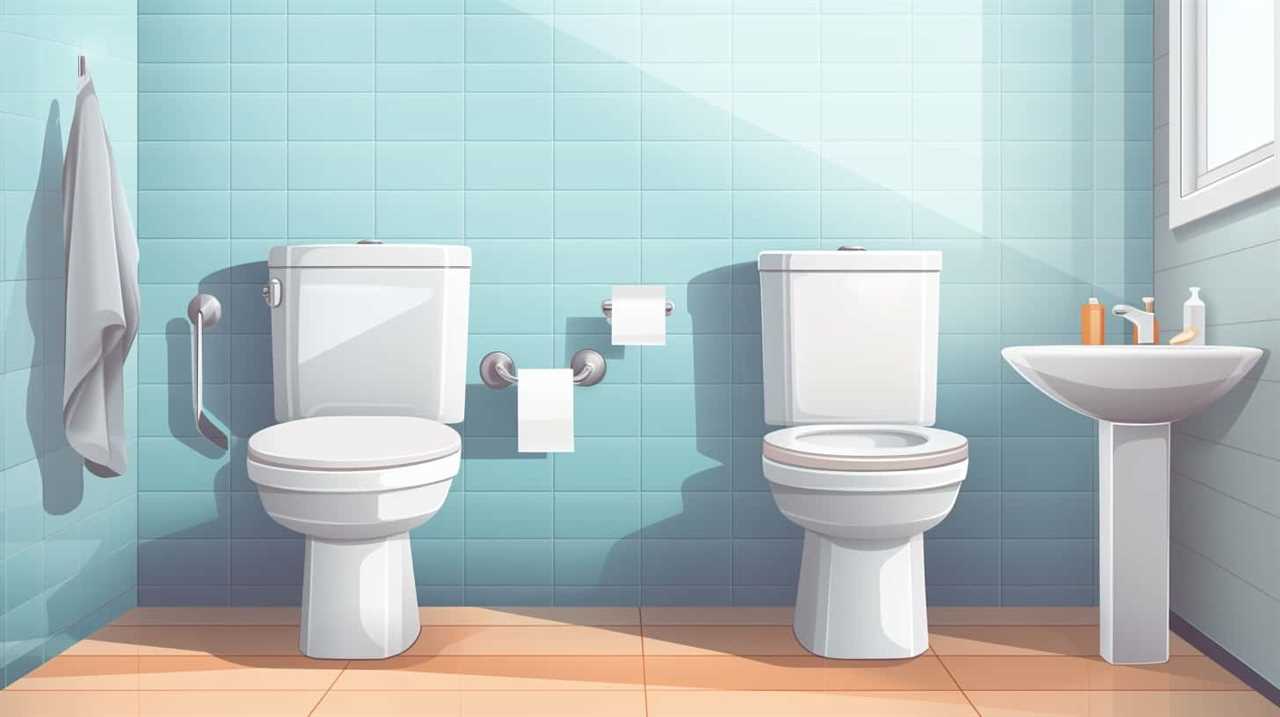
Replace it with a new flush valve and tighten it securely. Finally, reattach the water supply line and turn on the water.
Inspect the Overflow Tube
To inspect the overflow tube, we’ll need to remove the tank lid and locate the opening on the side of the tank. The overflow tube is responsible for preventing the toilet from overflowing by diverting excess water into the bowl. Here is how you can inspect the overflow tube:
- Check for any cracks or damage in the tube.
- Ensure that the tube is properly connected to the fill valve and the flush valve.
- Clean the tube if it’s clogged with debris or mineral buildup.
Inspecting the fill tube is also important in troubleshooting a trickling toilet. Make sure it’s securely connected to the fill valve and free from any blockages.
If inspecting these components doesn’t solve the issue, you may need to consider replacing the float valve. This valve controls the water level in the tank and can become worn out over time.
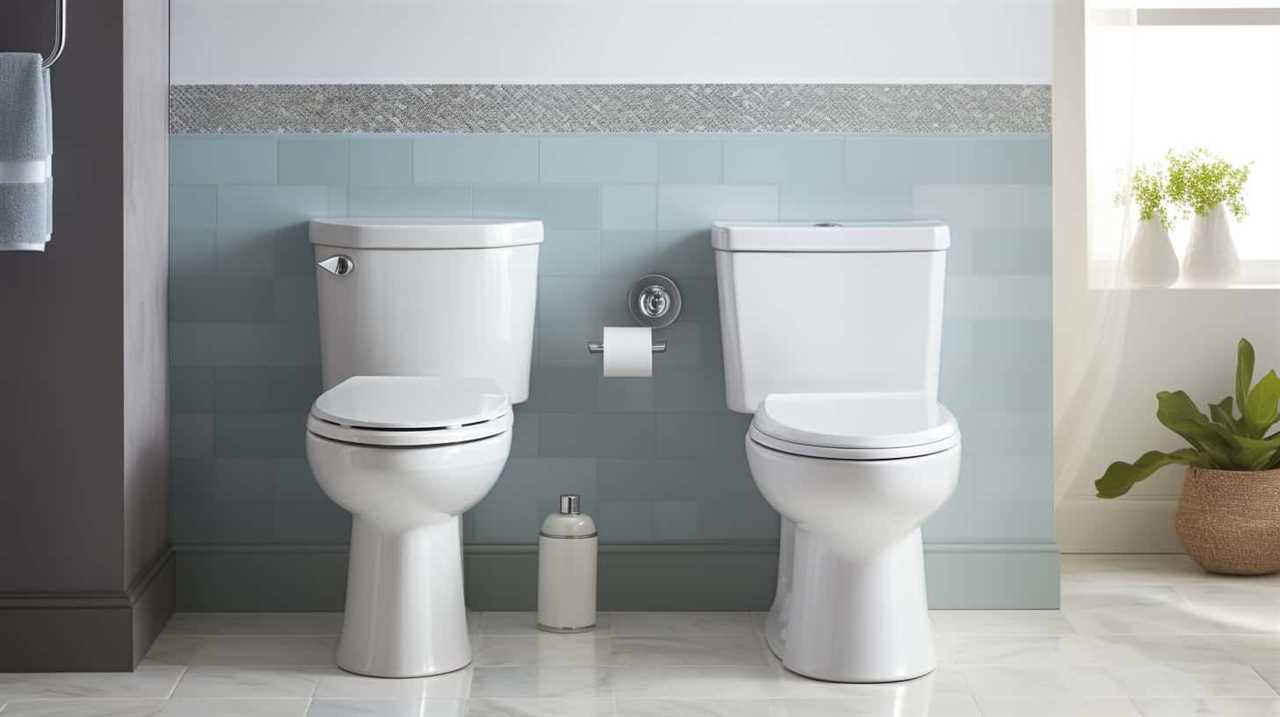
Frequently Asked Questions
How Do I Unclog a Toilet That Is Trickling?
To prevent a trickling toilet, it’s important to troubleshoot and address any clogs promptly. Unclogging a trickling toilet involves using a plunger or a toilet auger to remove the obstruction.
Can I Use Any Type of Cleaning Solution to Clean the Fill Valve?
We can use various cleaning solutions to clean the fill valve, but it’s important to choose one that is safe for plumbing. Alternatively, we can also try alternative methods for cleaning the fill valve.
What Should I Do if Adjusting the Water Level Doesn’t Stop the Trickling?
If adjusting the water level doesn’t stop the trickling, we may need to troubleshoot further. It could be a faulty flapper or a problem with the fill valve. Let’s investigate toilet tank repair options to fix the issue.
How Often Do I Need to Replace the Flush Valve?
When it comes to maintaining a toilet, knowing when to replace the flush valve is crucial. Signs of a failing flush valve include continuous trickling. We recommend replacing the flush valve every few years to prevent leaks and ensure proper functioning.
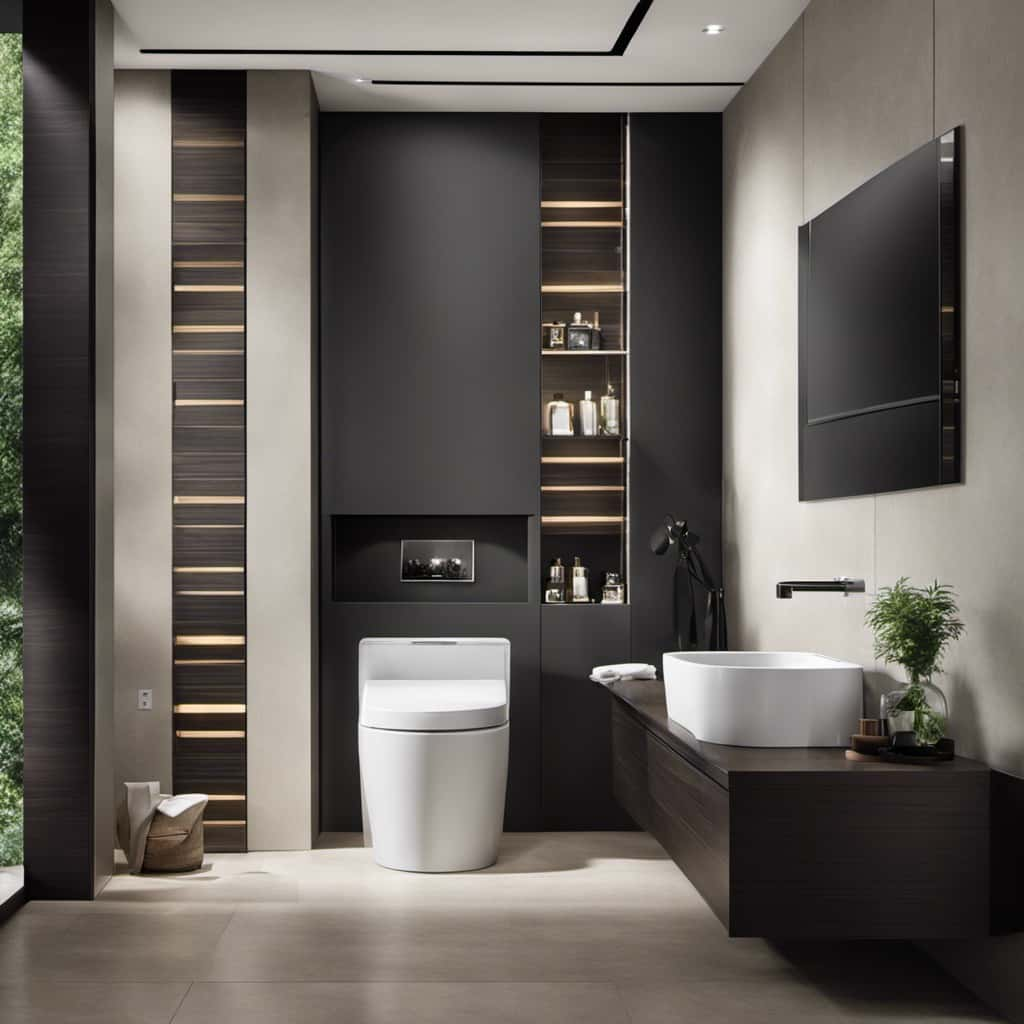
Is It Normal for the Overflow Tube to Have Some Water in It?
Yes, a faulty fill valve can cause a trickling toilet. If the overflow tube has water in it, it may indicate a problem. It’s important to address these issues promptly to prevent water damage.
Conclusion
To prevent your toilet from trickling, it’s essential to check the flapper valve, adjust the water level, clean the fill valve, and replace the flush valve if necessary.
Additionally, inspecting the overflow tube can help identify any underlying issues.
By following these simple steps, you can effectively fix your toilet and save water in the process.

So, why let a trickling toilet waste your resources when you can easily take control of the situation?
